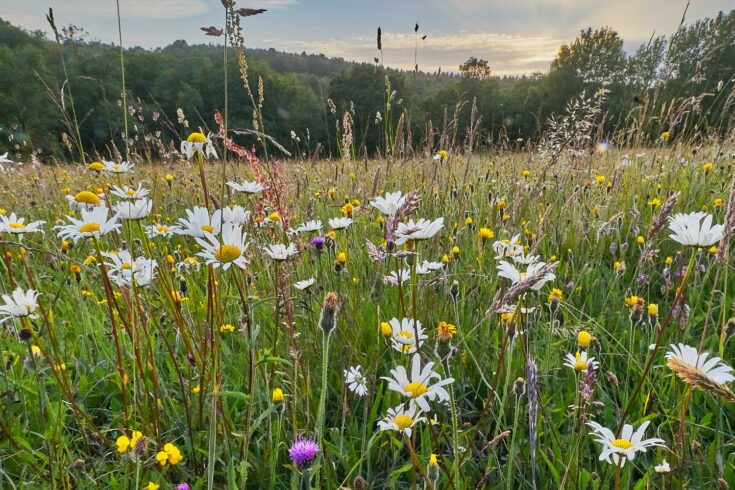An innovative partnership project will unpick and examine the essential elements required for ecosystem restoration at sites across the UK.
The restoration sites include those managed by the National Trust and English Heritage.
How ecosystems work together
A four-year research project has been launched to help tackle the biodiversity crisis.
The project will identify how the UK’s most precious woodland and meadow habitats can be successfully restored by looking at how different plants, animals and other organisms in ecosystems work together.
Funded by Natural Environment Research Council, the £2 million study aims to reverse habitat loss and the degradation of land caused by:
- agricultural intensification
- urban development
- climate change
- pollution.
Ecosystems knit together through complex individual processes like:
- nutrient cycling
- carbon capture
- pollination.
By understanding ecosystem processes, scientists hope the research will drive forward ecological restoration target-setting.
Stonehenge and the South Downs
The research is due to get underway at over 100 sites across the country including:
- Knepp Estate in Sussex
- South Downs
- Stonehenge landscape
- heavily degraded landscapes, such as mining and quarry sites
- small areas of woods surrounded by intensively farmed agricultural land.
The partnership project is led by Cranfield University including:
- National Trust
- University of Stirling
- UK Centre for Ecology & Hydrology
- Forest Research.
It hopes to provide evidence of how to improve biodiversity and reduce threats to habitats using woodlands and meadows as ‘test’ environments. These have been under particular pressure and in decline for several decades.
Ecosystem restoration
The research will help conservationists ensure interventions such as tree planting or re-introducing species are made to maximum benefit.
Professor Jim Harris of Cranfield University, lead principal investigator for the project, said:
Improving our ability to restore functional ecosystems is crucial to ensuring we restore nature and achieve net gain in line with government plans ‘to be the first generation to leave the environment in a better state than we found it’.
We are trying to understand how the nuts, bolts and cogs of the ecosystems that we are interested in reassemble and function, and whether this can be done quickly, or whether we need a lot of patience with Mother Nature, who you simply cannot fool.
Rewilding at Knepp Estate
Teams of soil ecologists, botanists, entomologists and animal behaviourists will kick-off an integrated programme of field sampling and laboratory analysis, together with remote sensing, bioinformatics, and statistical and mathematical analysis.
This programme will provide a detailed exploration of different sites and the factors which control their development and stability.
Knepp Estate in West Sussex is one of the sites which will be involved in the research.
Charlie Burrell, conservationist and landowner said:
At Knepp we have learned the value of monitoring the changing dynamics in a process-led landscape restoration project.
This monitoring is key to show how biodiversity, soils and other ecosystem services can recover quickly from a low baseline.
We are delighted to be a partner in this project which aims to measure ecosystem resilience in restoration projects in the face of climate change.
This science will provide a crucial evidence base to support a growing movement which is integral to re-connecting our landscape making it better for wildlife and people alike.
Top image: Credit: Matthew J Thomas/GettyImages

